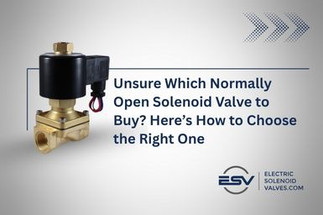Posted by Electronic Solenoid Valves on Jul 18th 2025
Unsure Which Normally Open Solenoid Valve to Buy? Here’s How to Choose the Right One
When you're building or optimizing a fluid control system, every component counts. And when it comes to controlling flow with precision, Normally open solenoid valves are key players you might not always hear about, especially when it's vital to keep fluids moving even if the power goes out. Here's why: Unlike the more common normally closed valves, these specialized valves are built to stay open when they lose power. This ensures that your system keeps flowing without interruption, even during an outage.
At ElectricSolenoidValves.com, we understand that selecting the right valve isn't just about picking a part; it's about ensuring your system's reliability, safety, and efficiency. That's why we've put together this essential guide. We'll walk you through the five crucial factors to consider before you purchase a normally open solenoid valve, helping you make an informed decision and avoid costly mistakes.
What Exactly is a Normally Open (NO) Solenoid Valve?
A solenoid valve is an electromechanical device that controls the flow of liquid or gas using an electrical current. The "normally open" (NO) designation refers to its default state—the position it holds when no power is applied to its coil.
Think of it like a light switch:
- Normally Closed (NC) Solenoid Valve: This is the most common type. It's "off" (closed) when de-energized and switches "on" (opens) when power is applied.
- Normally Open (NO) Solenoid Valve: This is the opposite. It's "on" (open) when de-energized, allowing fluid to flow freely. When power is applied, the valve closes, shutting off the flow.
The primary benefit of a normally open solenoid valve is its "fail-safe" characteristic. In situations where continuous flow is absolutely essential for safety or operation, even if electrical power is interrupted, an NO valve ensures your system doesn't unexpectedly shut down. This makes them indispensable in many critical applications.
Where Normally Open Valves Shine: Common Use-Cases
Understanding where normally open solenoid valves are most effective helps clarify their importance. They are ideal for applications where the default state needs to be "flow" and where an interruption of power should not stop that flow.
Typical applications include:
- Emergency Cooling Systems: Keeping coolant flowing to prevent equipment overheating during a power failure.
- Ventilation Systems: Ensuring airflow in the event of an electrical outage, for example, in fume hoods or critical air supply lines.
- Fire Suppression Lines: Maintaining the availability of fire extinguishing agents even if primary power is lost.
- Process Purging or Draining: Allowing gravity-fed draining or line purging to continue when a system is idle or de-energized.
- Bypass or Drain Lines: Maintaining a default flow path, only closing when an alternative route is needed or for maintenance.
Five Critical Factors Before You Buy Your NO Solenoid Valve
Choosing the wrong solenoid valve can lead to more than just a headache; it can cause safety risks, reduce system efficiency, and increase maintenance costs. To help you select the perfect normally open solenoid valve, here are five essential factors we recommend you evaluate:
1. Application Needs & Fluid Compatibility
This is arguably the most crucial starting point. Your valve must be compatible with the fluid it's controlling and the conditions it will encounter.
- Type of Fluid: Is it water, air, a corrosive chemical, steam, or a viscous oil? Different fluids require different valve body and seal materials to prevent corrosion or degradation.
- Temperature and Pressure Ranges: Every valve has specified operating limits. Exceeding these can lead to leaks, failure, or even dangerous ruptures. Always match the valve's ratings to your system's highest and lowest expected conditions.
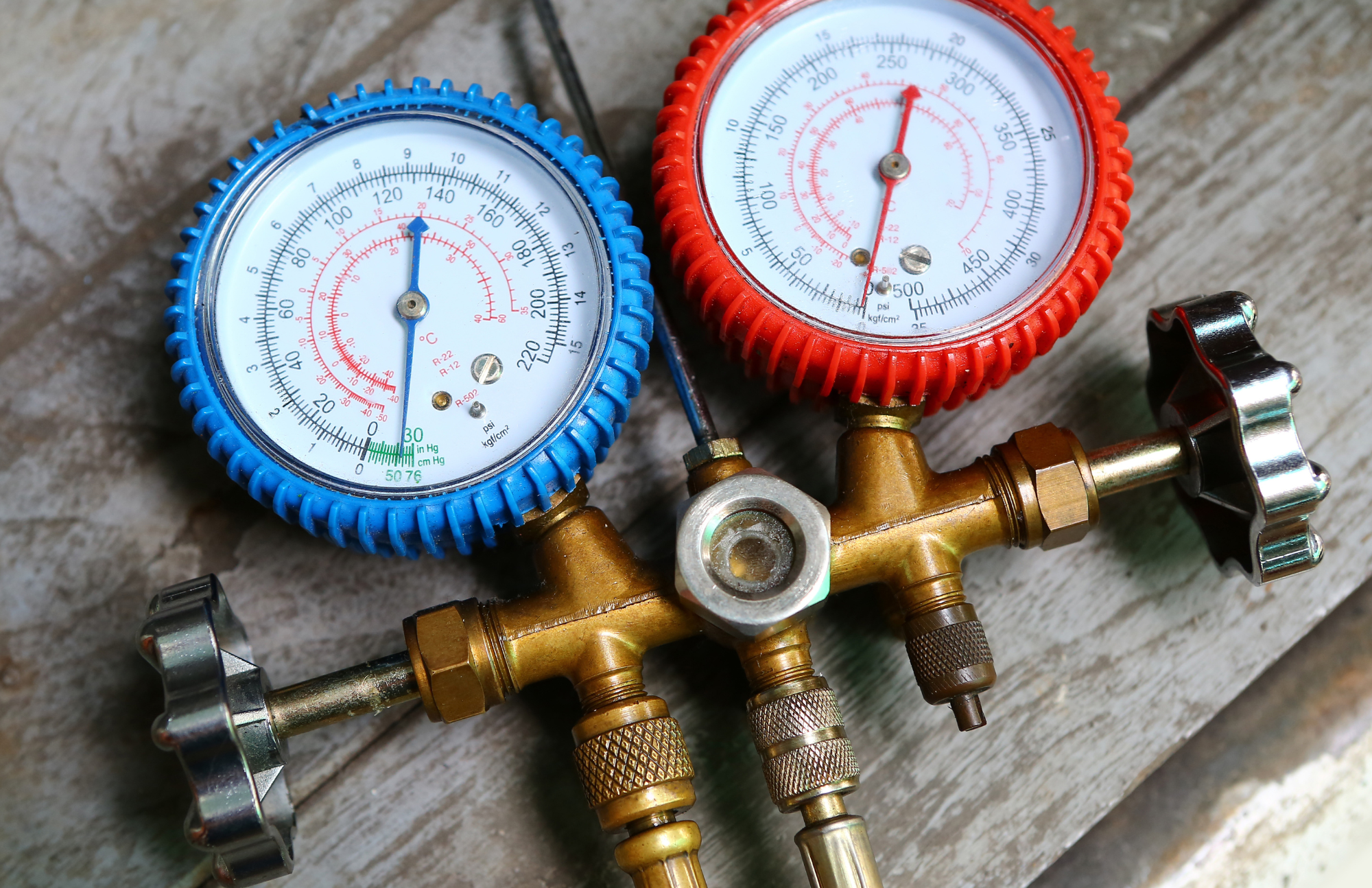
- Operating Environment: Will your valve be indoors or outdoors? Exposed to dust, moisture, extreme temperatures, or hazardous materials? Consider NEMA ratings for enclosures and ATEX/UL certifications for hazardous locations to ensure the valve can withstand its environment.
2. Electrical Specifications
The solenoid coil is the engine of your valve, and matching it to your power supply is absolutely vital.
- Voltage (AC/DC): Solenoid coils are designed for specific AC (e.g., 120V AC, 240V AC) or DC (e.g., 12V DC, 24V DC) voltages. Using the wrong voltage will either prevent operation or quickly burn out the coil.
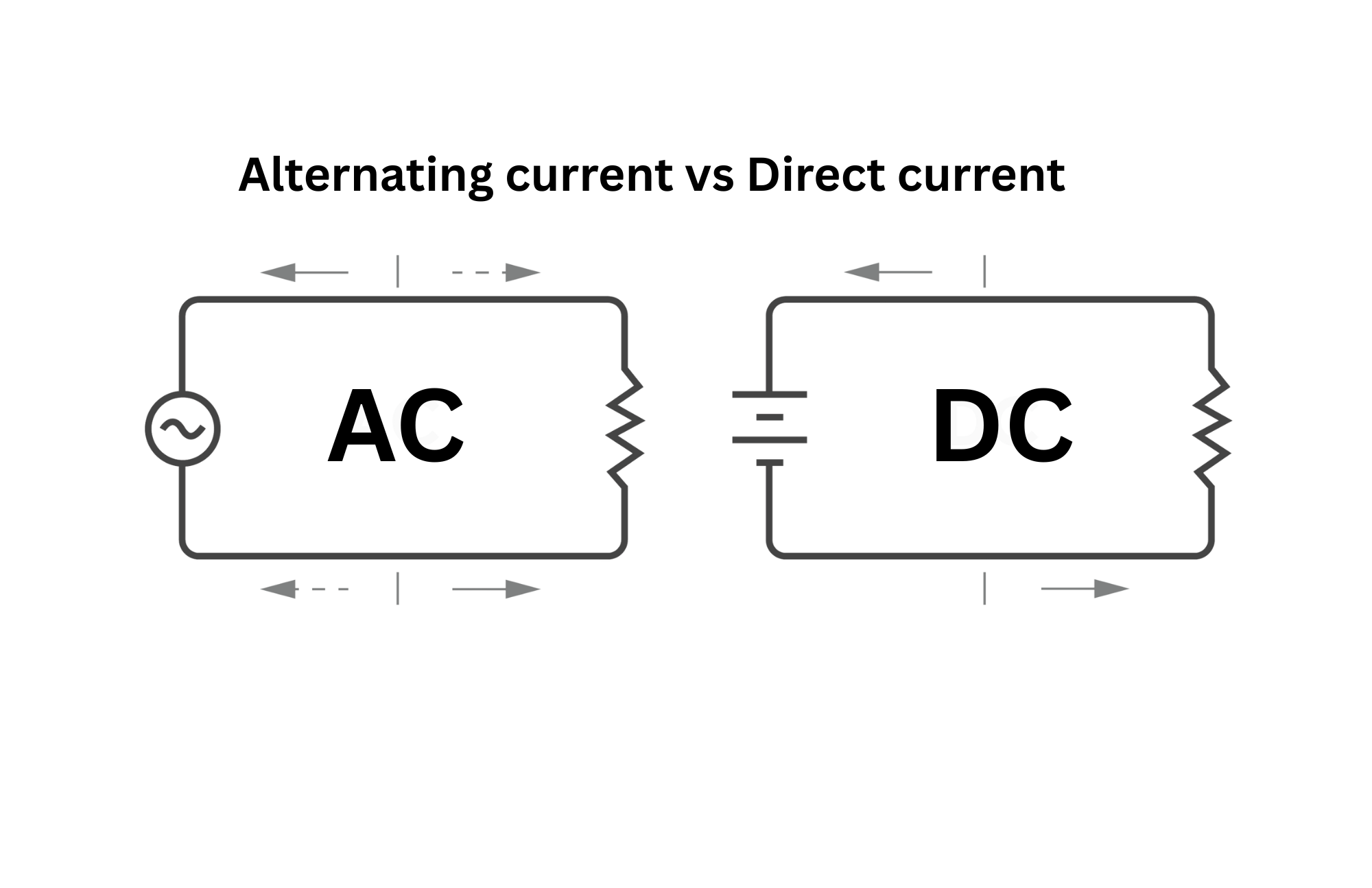
- Power Consumption: Think about the wattage or amperage. For battery-powered systems or installations with many valves, power efficiency can be a major consideration.
- Duty Cycle (Continuous vs. Intermittent): Some valves are built for continuous 24/7 operation, while others are for intermittent use. Running an intermittent-duty valve continuously will lead to overheating and premature failure.
3. Flow Rate & Orifice Size
The physical design and internal components of the valve dictate how much fluid or gas can pass through it.
- Required Flow Rate: Determine the maximum flow your application needs (e.g., in GPM or LPM). Valves are rated with a Cv (flow coefficient) value, which indicates their flow capacity. A valve that’s too small will restrict flow, potentially damaging pumps, while one that’s too large can lead to inefficient operation.
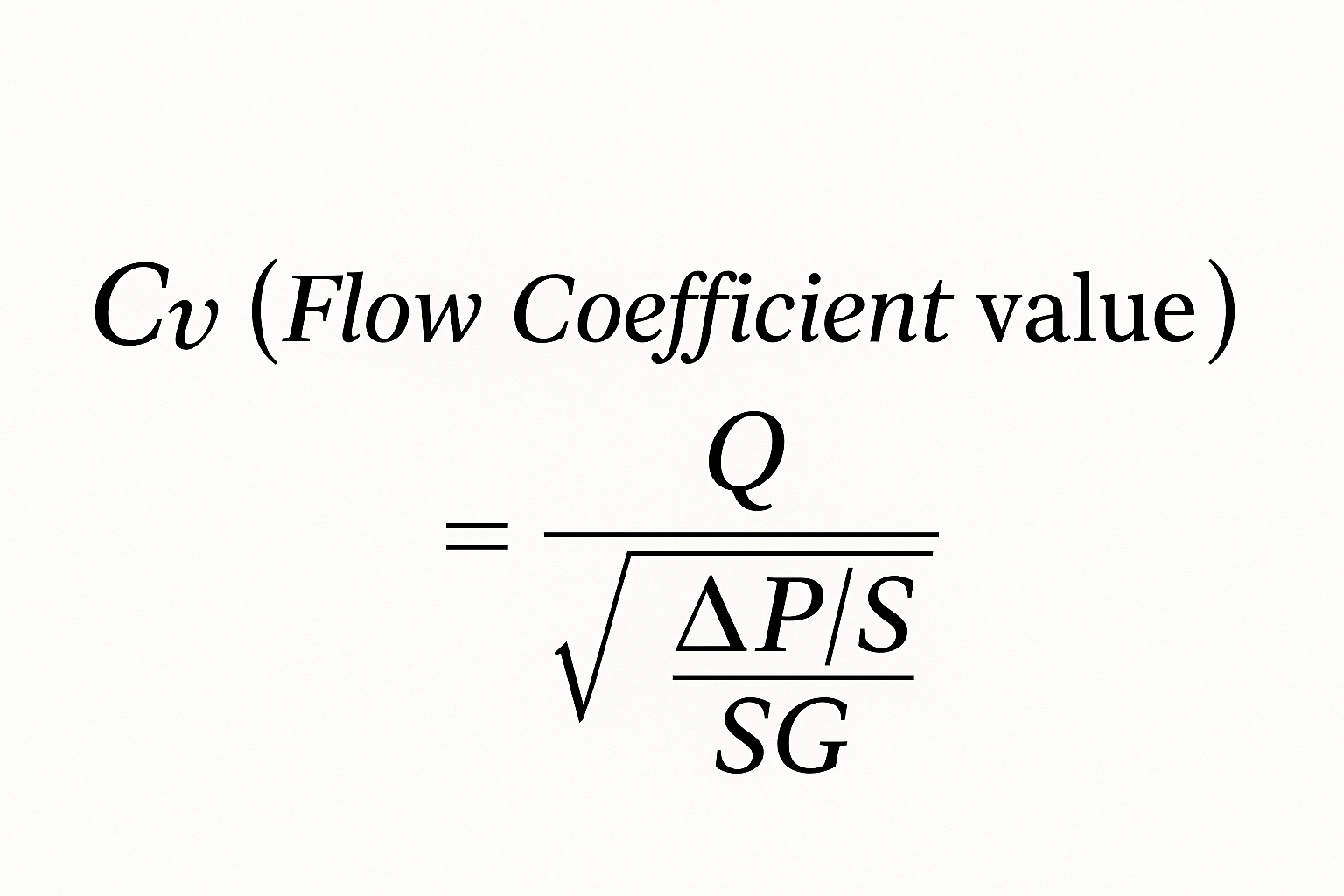
- Matching Orifice Size: The orifice is the internal opening that the plunger controls. A larger orifice generally allows for higher flow rates. Ensure this aligns with your system's requirements.
- Connection Type and Size: Valves come with various port sizes (e.g., 1/4", 1/2", 1") and connection types (NPT, BSP, flange). Ensure these match your existing plumbing to avoid adapters, which can introduce potential leak points or reduce flow.
4. Material Construction
The materials used in your valve's construction directly influence its durability, chemical resistance, and overall lifespan.
- Valve Body:
-
|
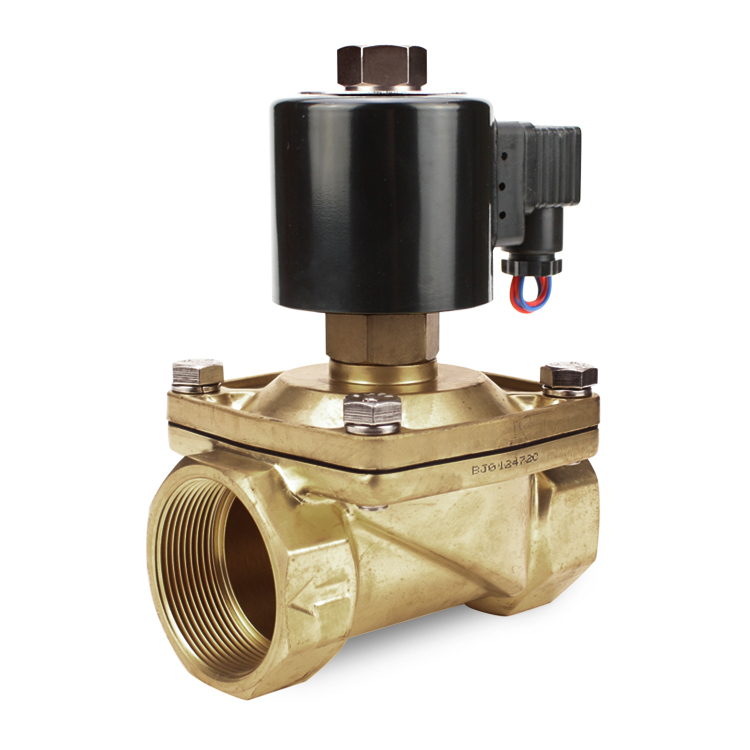 |
|
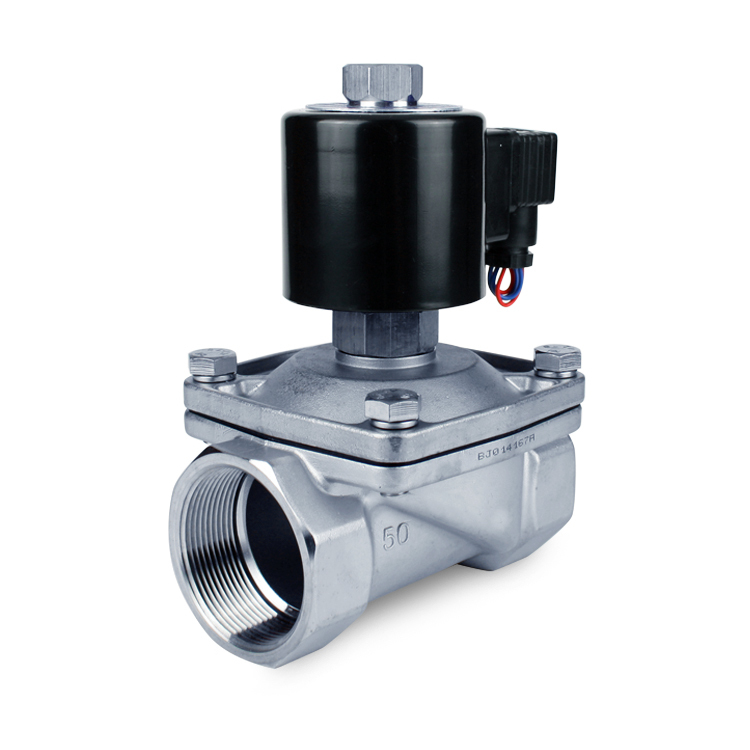 |
|
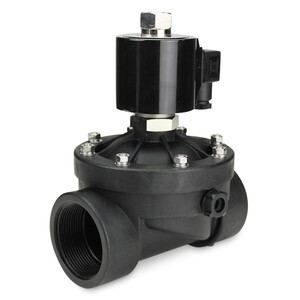 |
- Seal Material: This is critical for preventing leaks and must be compatible with your specific fluid and operating temperature.
- NBR (Buna-N): Good for petroleum-based fluids, air, and cold water.
- EPDM: Excellent for hot water, steam, alcohols, ketones, and some acids. Not recommended for petroleum products.
- Viton (FKM): Offers superior chemical resistance to a wide range of aggressive chemicals, high temperatures, and oils, though typically at a higher cost.
5. Actuation Type & Response Time
How the valve operates internally and its speed are also key considerations for optimal system performance.
- Direct Acting vs. Semi-Direct Acting vs. Pilot-Operated:
- Direct Acting: The solenoid directly moves the plunger. These are great for small orifices, applications requiring zero pressure differential, and offer faster response times.
- Semi-Direct Acting (Servo-Assisted): This valve combines features of both direct acting and pilot-operated solenoid valves. It uses the solenoid coil to directly lift the diaphragm or plunger while also relying on pressure assistance from the media to open and close the valve. This design allows it to operate at zero pressure differential, unlike standard pilot-operated valves and higher pressures, unlike the direct acting valves.
- Pilot-Operated (Indirect Acting): These valves use the line pressure to assist in opening/closing the main valve, controlled by a small pilot orifice. They require a minimum pressure differential to operate but can handle larger flow rates and pressures with smaller coils, though they typically have a slower response.
- Response Time: How quickly does your application need the valve to open or close? Some systems demand millisecond responses, while others benefit from a slower, smoother action. Direct-acting valves are generally faster.
- Manual Override Options: Do you need a way to manually open or close the valve during a power failure or for maintenance? Some valves offer a manual override lever or knob, which can be incredibly useful.
For a deeper dive into how different solenoid valve types work, check out our blog post on Understanding 2-Way, 3-Way, and 4-Way Solenoid Valves. You can also find technical specifications and explanations on reputable sites like Automation Direct, which provides excellent resources on the principles of solenoid valve operation.
Why Your Choice of a Normally Open Valve Matters
Choosing the right normally open solenoid valve isn't just a technical detail - it's a critical design decision that profoundly impacts your system:
- System Reliability: Ensuring fail-safe flow during power loss, preventing unexpected shutdowns.
- Operational Efficiency: Matching flow needs while minimizing energy waste and maximizing performance.
- Safety: Mitigating risks by preventing unplanned shutdowns, leaks, or pressure-related failures.
- Lifecycle Costs: Reducing the need for unplanned maintenance, frequent replacements, and costly downtime.
- Coil Strain: Reducing the amount of energized time, optimizing the de-energized position.
Conclusion
A normally open solenoid valve is far more than just a default-open switch; it’s a critical safety and operational component for applications where continuous flow is paramount. By thoroughly evaluating these five factors, application conditions, electrical specifications, flow requirements, material construction, and actuation type you can ensure your system remains reliable, safe, and efficient for years to come.
Ready to find the perfect normally open solenoid valve for your next project? We invite you to explore our extensive selection of normally open solenoid valves. Our experts are here to help you make the ideal choice!
FAQs About Normally Open Solenoid Valves
Q1: What happens if I use an AC normally open valve with DC power?
A1: Generally, an AC coil will not operate correctly or at all with DC power. AC coils have different impedance characteristics. Attempting to use DC power on an AC coil can lead to the coil drawing excessive current, overheating, and quickly burning out. Always match AC to AC and DC to DC.
Q2: Can a normally open solenoid valve be converted to normally closed?
A2: No. Normally open and normally closed solenoid valves have fundamentally different internal designs, particularly with their plunger and spring mechanisms, and often the flow paths. They are designed for one specific default state and cannot typically be interconverted.
Q3: Why would I choose a normally open valve over a normally closed one?
A3: You would choose a normally open solenoid valve when the default or "safe" state of your system requires continuous flow, especially during a power failure. For example, in a cooling system, if power fails, you want the coolant to continue flowing to prevent overheating. If power fails and you wanted the system to stop, you'd use a normally closed valve.
Q4: Do normally open valves consume power when they are "open"?
A4: No. A normally open solenoid valve is open by default when it is de-energized (no power applied). It only consumes power when you energize the coil to close the valve. This makes them energy-efficient for applications where flow is typically desired and only occasionally needs to be shut off.
Q5: How do I know the correct Cv value for my application?
A5: The Cv (flow coefficient) value is a measure of a valve's flow capacity. Calculating the precise Cv needed involves knowing your required flow rate, the pressure drop across the valve, and the specific gravity of your fluid. There are many online Cv calculators and charts available to help you determine the appropriate Cv value for your system's conditions.

